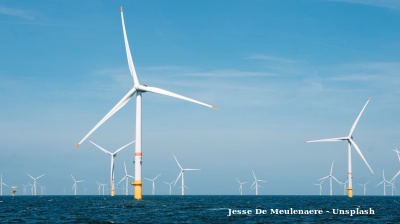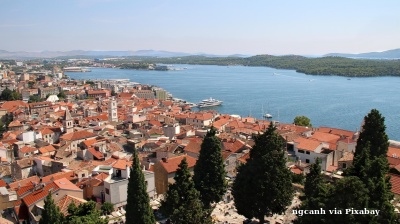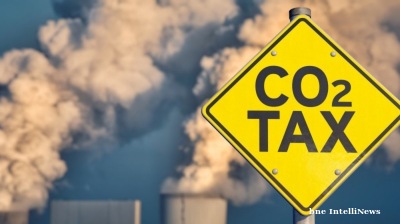Extreme winter warming event linked to a deep low-pressure system above Iceland
WHAT: The North Pole has experienced soaring temperatures 20°C above average and topping the melting point.
WHY: The extreme weather was largely a result of a deep low-pressure system that formed above Iceland pushing a strong flow of hot air towards the North Pole.
WHAT NEXT: The Arctic is rapidly being affected by climate change. With temperatures having risen 1.3°C since preindustrial times, the Arctic Ocean is now expected by scientists to lose its sea-ice cover in summer during the next two decades.
Temperatures skyrocketed at the North Pole on February 9, climbing 20°C above average and reaching the melting point, The Guardian reported.
The burning of fossil fuels has been the catalyst for temperature rise and scientists say the planet’s temperature has increased by approximately 1.3°C since preindustrial times.
While disruption to the carbon cycle is typically the driving factor in events of extreme weather, this extreme winter warming event was largely due to a deep low-pressure system.
The system had formed above Iceland and directed a strong flow of hot air towards the North Pole. Additionally, the wind-driven warming was amplified by the extra-hot northeast Atlantic maritime region.
The Copernicus Data Space Ecosystem revealed daily temperatures near the North Pole greater than 20°C above average at this time of the year. Meanwhile, absolute temperature rose to more than -1°C as far north as 87°N.
While the formation of such systems and such extreme weather events are incredibly rare, they are not without precedent. In February 2018, a similar event was documented.
“This was a very extreme winter warming event,” Mika Rantanen, a scientist at the Finnish Meteorological Institute, told The Guardian. “Probably not the most extreme ever observed, but still at the upper edge of what can happen in the Arctic,” Rantanen added.
Indeed, these extreme weather events in the Arctic appear primed to occur more frequently with the Arctic having warmed almost four times faster than the global average over the past 45 years.
In the Arctic, temperature rise is particularly alarming due to melting ice and correspondingly rising sea levels, which threaten habitats and livelihoods on low-lying lands.
A study published in 2023 and coauthored by Professor Dirk Notz, a University of Hamburg climate scientist, and Professor Seung-Ki Min of South Korea’s Pohang University found that the Arctic Ocean is projected to lose its sea-ice cover during summer for the first time ever during the next two decades.
Indeed, the summer thickness of sea ice in the Arctic is only about half of what it was in 1950 according to the University Corporation for Atmospheric Research Center for Science Education.
And last summer, arctic sea ice retreated to a minimum extent of 4.28mn square kilometres, which is nearly an historic low, NASA researchers revealed. The end of summer average for between 1981 and 2010 was 6.22mn square kilometres.
The 2024 total is the seventh lowest since satellite records for ice began being recorded in the late 1970s. And while the 2024 total is above the all-time low of 3.39mn square kilometres, which was set in 2012, sea ice coverage totals have consistently been trending downward.
And while Arctic sea ice is clearly shrinking, it is also getting younger, with the majority of ice in the Arctic Ocean now comprising of thinner, first-year ice. This ice will also have a more difficult time lasting through warmer months.
Compounding the issue is that the loss of se ice also increases heat in the Arctic. And in 2023, according to Copernicus the temperature above Arctic territory was 1.16°C above average, making it the fifth hottest year in the region.
Meanwhile at the opposite end of the globe, Antarctica has also witnessed heat waves in the past year. Temperatures last July in Antarctica climbed 28°C above average in the region, with temperatures soaring about 50°C in one week alone – an event described as sudden stratospheric warming (SSW).
And while SSWs happen almost every other year in the northern hemisphere, this marked the first time an SSW occurred in the southern hemisphere during the winter season.
While temperatures in Antarctica, the coldest place on earth, were still -25°C and therefore far from the melting point, it is still a concerning event, as Antarctic melting could potentially affect global oceanic circulations.
Moreover, Antarctica’s heatwave also contributed to the world’s hottest day ever, experienced last summer.
As temperatures continue to rise, the survival of the Arctic Sea is increasingly coming into question. Given the Arctic’s outsized impact on rising sea levels, soaring temperatures in both the North and South Pole will need to rise to the top of the global agenda if some of the worst impacts of climate change are to be averted.
bneGREEN

North Macedonia's Skopje tackles mounting waste and rodent crisis
Locals say the problems in Skopje's Centar municipality worsened during the local election period when political campaigning took precedence over maintenance.

Malaysia–Vietnam offshore wind project to deliver 2,000 MW by 2034, strengthening regional green energy links
Malaysia’s upcoming offshore wind project connecting Vietnam to Peninsular Malaysia is expected to generate up to 2,000 megawatts (MW) of clean energy by 2034, marking a major step in the nation’s renewable energy expansion

EBRD invests €16.8mn in Croatia’s first large-scale battery storage and virtual power plant
Development bank to take its first equity stake in a standalone merchant storage project.

Kyrgyzstan says neighbours “upset” by country’s lack of water
“This year we were supposed to overcome shortages, but instead, they have intensified,” deputy head of cabinet tells Uzbekistan and Kazakhstan.

_Cropped.jpg)


